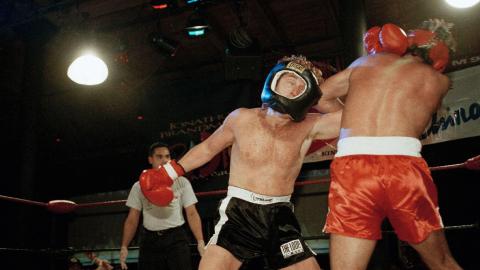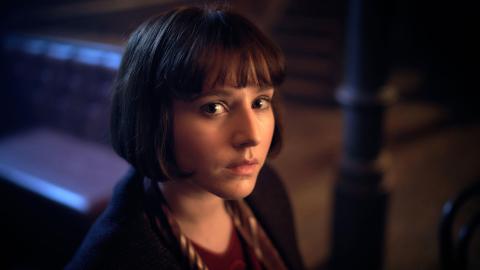Was Emily Brontë a feminist?
The year was 1845. Another strong woman was on the throne. And Emily was tucked away in the Haworth Parsonage, writing her first and only novel, Wuthering Heights. When she hit a brick wall, you can imagine, she put down her pen and took a brisk walk on the moors to clear her head. Or focused on some of her celebrated needlework.
Across the Atlantic, in drawing rooms across America, a storm was brewing. That storm was called “first-wave feminism”. In 1848, the year of Emily’s death, 68 women and 32 men signed the Declaration of Sentiments in New York, demanding equal voting and property rights and better access to education and work. Britain’s foray into feminism began in the 1860s, with Barbara Bodichon and Bessey Rayner Parkes’ Langham Place Circle. Emily probably wasn’t hugely aware of first-wave feminism. She didn’t get out much and it was a bit after her time. Years after her death, she would be revered as a feminist icon. But was she actually a feminist?
The Angel of the House
Known as ‘The Angel of the House’, a Victorian woman’s place was firmly in the home. The corseted women of the upper classes perfected accomplishments like reading, music and drawing, to help them attract a husband. Working class women often had to work but had minimal access to education, and were still effectively controlled by their husbands, fathers and employers.
As middle-class women, the Brontë sisters had greater access to education and work. Their father, Patrick, also allowed them unprecedented freedom, for women of their time. Alongside their wayward brother, Branwell, they spent much of their childhoods, and beyond, writing and concocting complex fantasy worlds together. They read extensively, wandered unchaperoned through those famous moors and went away to work as teachers and governesses (though Emily hated to be away from home and only managed one brief teaching post!) Charlotte’s two-year stint at a school in Brussels even inspired her third novel, Villette.
A Proto-Feminist
When they inherited money from their aunt, all three sisters were finally able to give up work and focus writing full time. Their ability to do this was huge at a time when women were not recognised as having any legal or financial autonomy. It was perhaps this unique freedom they had through their lives, combined with their exceptional isolation, which gave all three sisters such a proto-feminist bent in their work (which was initially published under male pseudo names!).
Charlotte’s Jane Eyre tells Mr Rochester she is a ‘free woman with an independent will’ before running off into the night. In Anne’s novel, The Tenant of Wildfell Hall, Helen Graham obediently sticks by her abusive, alcoholic husband, and he ruins her life. It was Wuthering Heights, however, which shocked and appalled its contemporary readers. So much so that Charlotte effectively apologised for it after Emily’s death!
The darkness and the violent emotions at the core of Wuthering Heights deeply unsettled its Victorian readership. A pair of angry lawless antagonists, Cathy and Heathcliff were a couple Tarantino would be proud of. Torn between wild Heathcliff and her rich, civilised husband, Cathy suffers a full-scale mental breakdown and apparently starves herself to death. Untethered by her death, Heathcliff becomes a violent coercer, captor, and possibly a murderer.
In the 200 years since her death, Wuthering Heights has been recognised as a masterpiece. Feminists, in particular, have taken it to their hearts, even more so than Charlotte’s Jane Eyre. Virginia Woolf argued that Emily Brontë and Jane Austen were the only writers in this pre-feminist era who refused to bow to social convention, which was, by its nature, imposed by men.
The Real Emily Brontë
Intermittently called anorexic, “a bit asperge-y” and a lesbian, Emily was the most reclusive Brontë and the one we know least about. Many of our ideas about her come from assumptions based on Wuthering Heights itself, combined with a patchwork of canonised anecdotes. According to writer Elizabeth Gaskell, Emily repeatedly punched her pet dog in the face for putting his muddy paws up on the bed. During her short-lived teaching career, she allegedly told her pupils she preferred the school dog to them (if the first anecdote were true, they should have been very afraid!). When she died, she was so thin, her coffin was 16 inches wide.
There is a tendency, with such an elusive author, to morph them with their protagonists. It is impossible to say how much of Emily there was in Cathy. From what little we know, it is perhaps safe to say that both of them shared an anger and an anarchic streak. Emily may have been great at needlework, but it’s hard to imagine an ‘angel of the house’ punching a dog in the face, or outright insulting pupils, who were essentially paying her wages. Though she, like her sisters, was far from the life and soul of the party, there seems to be the same fierceness in her character that there was in her writing. There is also a sense that she transcended traditional gender roles. Her former teacher, Monsieur Heger (who Charlotte was in love with) said she ‘had a capability of argument, unusual in a man, and rare indeed in a woman’ and a ‘strong, imperious will’.
There is a tendency to push the idea that Emily had mental health issues, much like Cathy herself – who suffers a full-scale mental breakdown, which leads to her death. In a way, this is almost to diminish the incredible challenge which her writing strikes at the heart of Victorian society and its conception of gender roles. In the same way, Charlotte later implored her readers to make allowances, because Emily was too sheltered and naïve to understand the implications of what she wrote.
It is impossible to say whether Emily would have considered herself to be a feminist if anyone had sat her down and explained the meaning of the word. Nevertheless, in writing as she did, Emily stripped away the entire construct of Victorian womanhood and created an incredible legacy for women and the feminist cause, which lives on today, 200 years after her birth.















